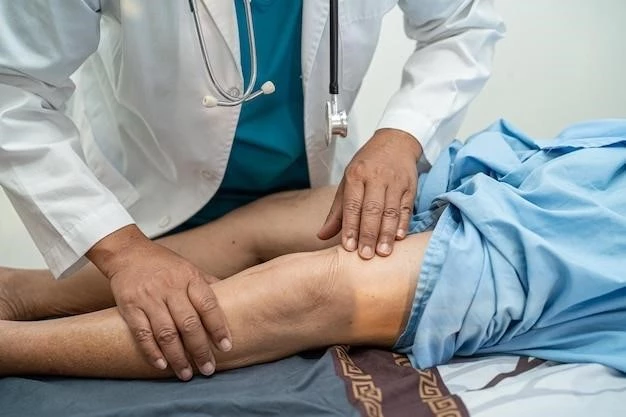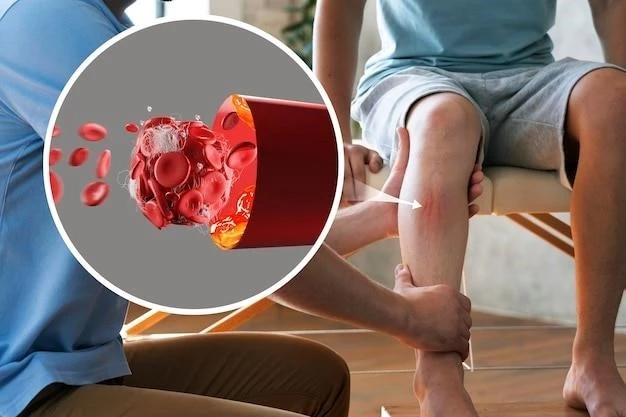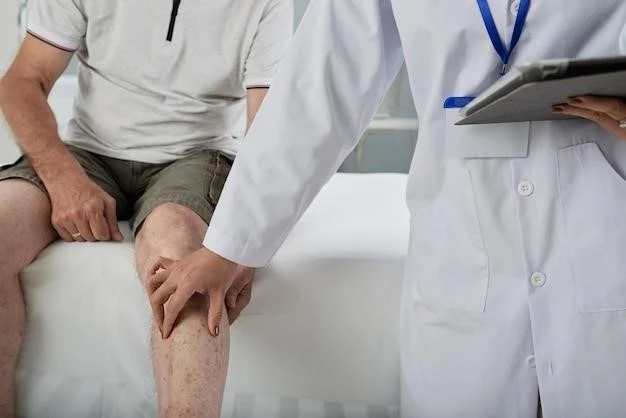Article Plan⁚ Disease ー Posterior Tibial Tendon Rupture
The posterior tibial tendon is crucial for supporting the arch of the foot and aiding in walking. When it ruptures, it can lead to pain, swelling, and a flattening of the foot’s arch. This condition often occurs over time due to overuse, leading to degeneration of the tendon. It can be challenging to diagnose in the early stages, but imaging tests like MRI can help confirm the rupture. Prompt diagnosis and treatment are essential to prevent further complications.
I. Overview of Posterior Tibial Tendon Rupture
Posterior Tibial Tendon Rupture is a condition that affects the tendon that connects the calf muscle to the bones on the inner side of the foot. This tendon is crucial for maintaining the foot’s arch and providing support when walking.
Posterior tibial tendon dysfunction (PTTD) is a gradual degeneration of the tendon that can lead to a rupture. The condition is often caused by overuse, injury, or underlying health issues like arthritis. As the tendon weakens, it may no longer be able to support the arch of the foot effectively.
Common symptoms of posterior tibial tendon rupture include pain and swelling on the inner side of the foot and ankle, a flattened arch, difficulty standing on the toes, and outward shifting of the affected foot. In some cases, a visible bump may be present along the tendon.
Diagnosing posterior tibial tendon rupture typically involves a physical examination to assess the foot’s structure and function. Imaging tests such as X-rays, ultrasound, or MRI scans may be ordered to confirm the diagnosis and evaluate the extent of the tendon damage. Early detection is essential to prevent further complications.
Treatment options for posterior tibial tendon rupture may vary depending on the severity of the condition. Non-surgical approaches like rest, immobilization, physical therapy, and orthotic devices may be recommended for mild cases. In more severe cases, surgery to repair or reconstruct the tendon may be necessary.
It is important for individuals with posterior tibial tendon rupture to follow their healthcare provider’s recommendations for treatment and rehabilitation. Recovery from this condition can take time, and patience is key to allowing the tendon to heal properly.
Prevention strategies for posterior tibial tendon rupture include wearing supportive footwear, avoiding activities that put excessive strain on the feet, maintaining a healthy weight, and performing exercises to strengthen the muscles and tendons in the lower legs.
Early intervention is crucial in managing posterior tibial tendon rupture to prevent further damage and improve the chances of a successful recovery. By seeking prompt medical attention and following a comprehensive treatment plan, individuals can reduce pain, restore function, and prevent long-term complications associated with this condition.
II. Symptoms and Diagnosis
Posterior Tibial Tendon Rupture presents with several noticeable symptoms. Patients may experience pain and swelling along the inner side of the ankle and foot. A flattened arch, also known as flatfoot deformity, can develop as the condition progresses. Difficulty standing on the toes and a noticeable outward shift of the affected foot are also common signs.
Diagnosing posterior tibial tendon rupture involves a combination of clinical evaluation and imaging tests. During a physical examination, a healthcare provider will assess the patient’s foot and ankle for signs of tendon weakness, pain, and structural changes. The ″too many toes sign,″ where the front of the foot points outward, can indicate a dysfunctional tendon.
Imaging studies such as X-rays are useful in ruling out other foot conditions and assessing the bones’ alignment. Ultrasound scans can visualize the tendon and any tears or abnormalities. Magnetic Resonance Imaging (MRI) provides detailed images of soft tissues like tendons, helping in confirming the diagnosis and determining the extent of the tendon damage.
Early diagnosis of posterior tibial tendon rupture is crucial to prevent further deterioration and complications. Since the condition can mimic other foot problems, healthcare providers rely on a combination of physical exams and advanced imaging to accurately diagnose and differentiate it from similar conditions.
It is essential for individuals experiencing symptoms of posterior tibial tendon rupture, such as persistent pain, swelling, or changes in foot structure, to seek medical attention promptly. Delaying diagnosis and treatment can lead to worsening symptoms, functional limitations, and potentially the need for more invasive interventions in the future.
By recognizing the characteristic symptoms of posterior tibial tendon rupture and undergoing a thorough diagnostic evaluation, patients can receive appropriate care tailored to their specific condition. Healthcare professionals play a vital role in identifying and managing this condition effectively to help patients regain function and mobility in their affected foot.
III. Risk Factors
Several risk factors contribute to the development of Posterior Tibial Tendon Rupture. One primary risk factor is age, as the tendon weakens and degenerates over time, making older individuals more susceptible to rupture. Engaging in activities that place repetitive stress on the tendon, such as running or jumping, increases the risk of injury.
Obesity is another significant risk factor for posterior tibial tendon rupture. Excess body weight places additional strain on the feet and tendons, accelerating wear and tear on the posterior tibial tendon. Individuals with conditions like arthritis or diabetes are also at higher risk due to compromised tendon health and circulation.
Anatomical factors can predispose some individuals to posterior tibial tendon rupture. People with flat feet or abnormal foot structures may have altered biomechanics that put excess stress on the tendon, leading to premature degeneration and potential rupture. Improper footwear with inadequate support can exacerbate these biomechanical issues.
Overuse or sudden increases in physical activity can strain the posterior tibial tendon beyond its capacity, increasing the risk of rupture. Athletes, especially runners and dancers, may be more prone to this injury due to the repetitive nature of their activities. Poor conditioning or improper training techniques can further elevate the risk.

Genetic predisposition may also play a role in some cases of posterior tibial tendon rupture. Family history of foot and ankle problems or connective tissue disorders can increase the likelihood of tendon degeneration and rupture. Understanding these genetic factors can help individuals take preventive measures to reduce their risk.
Occupational factors, such as jobs that involve prolonged standing, walking on hard surfaces, or wearing unsupportive footwear, can contribute to the development of posterior tibial tendon issues. Workers in professions like nursing, teaching, or manual labor may be at a higher risk due to the demands placed on their feet.
Identifying and understanding these risk factors is key to preventing posterior tibial tendon rupture. By addressing modifiable risk factors like obesity, improper footwear, and overuse, individuals can reduce the likelihood of tendon injury. Early intervention, proper conditioning, and lifestyle modifications can help mitigate the risk of developing this painful and debilitating condition.
IV. Treatment Options
Treatment options for Posterior Tibial Tendon Rupture aim to relieve pain, restore function, and prevent further damage to the tendon and foot structures. The choice of treatment depends on the severity of the condition, the patient’s lifestyle, and overall health.
In mild cases of posterior tibial tendon rupture, conservative treatments may be recommended. Resting the affected foot, applying ice packs to reduce swelling, and taking nonsteroidal anti-inflammatory drugs (NSAIDs) can help alleviate pain and inflammation. Immobilization with a cast or walking boot may be necessary to allow the tendon to heal.
Physical therapy plays a crucial role in the treatment of posterior tibial tendon rupture. Therapeutic exercises focusing on strengthening the muscles surrounding the ankle and foot, as well as improving flexibility and balance, can aid in restoring proper function and stability. A skilled physical therapist can customize a rehabilitation program to address the patient’s specific needs.
Orthotic devices, such as arch supports, custom shoe inserts, or ankle braces, may be prescribed to provide support and reduce strain on the posterior tibial tendon. These devices help realign the foot and ankle structures, relieving pressure on the damaged tendon and promoting healing.
In more severe cases or when conservative treatments fail to provide relief, surgical intervention may be considered. Surgical options for posterior tibial tendon rupture include tendon repair, tendon transfer, or reconstructive procedures to restore the tendon’s function and stability. The type of surgery recommended depends on the extent of tendon damage and the patient’s unique circumstances.
Postoperative rehabilitation is crucial for optimizing outcomes following surgical treatment for posterior tibial tendon rupture. Patients will undergo a structured rehabilitation program to regain strength, range of motion, and function in the affected foot. Gradual return to weight-bearing activities is guided by healthcare providers to ensure a safe and successful recovery.
Combining different treatment modalities, such as a holistic approach that includes both conservative and surgical interventions, can offer comprehensive care for individuals with posterior tibial tendon rupture. The goal of treatment is to reduce pain, improve foot function, and enhance the patient’s quality of life by addressing the underlying tendon pathology effectively.

V. Recovery Process
The recovery process following Posterior Tibial Tendon Rupture treatment varies depending on the chosen intervention, the extent of tendon damage, and individual factors. Proper post-treatment care and adherence to healthcare provider recommendations play a crucial role in achieving a successful recovery.
For individuals undergoing non-surgical treatments like rest, ice, medication, and physical therapy, the recovery process focuses on reducing pain and inflammation, restoring strength and flexibility, and gradually returning to normal activities. Patients are advised to follow a structured rehabilitation plan designed to meet their specific needs and goals.
Immobilization with a cast, walking boot, or brace may be necessary during the initial phases of recovery to protect the healing tendon and allow it to reattach properly. As symptoms improve and tendon integrity is restored, gradual weight-bearing and mobility exercises are introduced to promote functional recovery.
Physical therapy is a cornerstone of the recovery process for posterior tibial tendon rupture. Skilled therapists guide patients through exercises aimed at improving balance, flexibility, and strength in the foot and ankle. Therapeutic modalities like ultrasound or electrical stimulation may be used to enhance healing and reduce pain.
Following surgical intervention for posterior tibial tendon rupture, the recovery process is more extensive and may involve a longer recovery period. Patients typically undergo a period of immobilization, followed by a progressive rehabilitation program to rebuild strength, restore range of motion, and improve gait mechanics.
Postoperative appointments with healthcare providers are essential for monitoring the healing progress, addressing any concerns or complications, and adjusting the treatment plan as needed. Patients are encouraged to communicate openly with their healthcare team about their recovery experience and follow-up care.
Full recovery from posterior tibial tendon rupture can take several months to a year, depending on the severity of the initial injury and the effectiveness of the chosen treatment approach. Patience, consistency with rehabilitation exercises, and adherence to lifestyle modifications are key components of a successful recovery.
Throughout the recovery process, individuals with posterior tibial tendon rupture should prioritize self-care, including proper nutrition, adequate rest, and avoiding activities that may aggravate the healing tendon. Following post-treatment guidelines and attending scheduled follow-up appointments are essential for ensuring the best possible outcomes and reducing the risk of recurrent injury.
VI. Prevention Strategies
Implementing effective prevention strategies can help reduce the risk of developing Posterior Tibial Tendon Rupture and protect the health of the foot and ankle structures. By adopting lifestyle modifications and engaging in protective measures, individuals can safeguard their tendons and mitigate the risk of injury.
Wearing appropriate footwear is crucial in preventing posterior tibial tendon issues. Choose shoes that provide adequate support, cushioning, and stability for the feet. Arch supports or orthotic inserts may be beneficial for individuals with flat feet or abnormal foot biomechanics to help distribute pressure evenly across the foot.
Maintaining a healthy weight through proper nutrition and regular exercise can reduce the strain on the feet and lower extremities. Excess body weight places additional stress on the tendons and joints, increasing the likelihood of degenerative conditions like posterior tibial tendon rupture.
Engaging in exercises that strengthen the muscles supporting the foot and ankle can improve stability and reduce the risk of tendon injuries. Incorporate calf raises, toe curls, ankle circles, and other foot-strengthening exercises into your fitness routine to enhance the muscles’ ability to withstand repetitive stress.
Avoid sudden spikes in physical activity or overuse of the feet and ankles, especially during high-impact sports or recreational activities. Gradually increase the intensity and duration of exercise to allow the tendons to adapt and strengthen over time, reducing the risk of strain and injury.
Performing regular stretching exercises to maintain flexibility in the calf muscles, Achilles tendon, and plantar fascia can help prevent excessive strain on the posterior tibial tendon. Include stretches like calf stretches, heel cord stretches, and plantar fascia stretches in your warm-up and cool-down routines.
Proper biomechanics and alignment play a crucial role in preventing posterior tibial tendon rupture. Pay attention to your gait and posture while walking and standing. Avoid prolonged periods of standing on hard surfaces and wear supportive footwear that promotes natural foot mechanics.
Individuals with a family history of foot and ankle problems or connective tissue disorders should be vigilant about preventive measures and regular foot care. Consult with healthcare providers for personalized recommendations and screening tests to assess your risk of developing conditions like posterior tibial tendon rupture.
By incorporating these preventive strategies into your daily routine and being mindful of foot health, you can reduce the likelihood of experiencing posterior tibial tendon issues. Proactive measures, such as maintaining a healthy lifestyle, wearing supportive footwear, and practicing safe exercise habits, are key to preserving the health and function of your feet and preventing potentially debilitating conditions.
VII. Importance of Early Intervention
Early intervention in cases of Posterior Tibial Tendon Rupture is paramount to prevent worsening symptoms, structural deformities, and long-term complications. Timely diagnosis and treatment can help preserve the integrity of the tendon and improve the overall prognosis for individuals affected by this condition.
Seeking medical attention at the first sign of posterior tibial tendon rupture symptoms, such as persistent pain, swelling, or changes in foot structure, enables healthcare providers to promptly assess the injury and initiate appropriate management strategies. Early diagnosis allows for timely interventions to prevent further degeneration of the tendon.
Delaying treatment for posterior tibial tendon rupture can lead to progressive weakening of the tendon, resulting in functional limitations, instability in the foot and ankle, and the development of a significant flatfoot deformity. These complications can significantly impact an individual’s quality of life and mobility;
Early intervention may involve non-surgical approaches like rest, icing, elevation, and physical therapy to reduce inflammation, strengthen supporting muscles, and promote healing of the damaged tendon. These conservative treatments are most effective when initiated early in the course of the condition.
For individuals requiring surgical repair of a ruptured posterior tibial tendon, early intervention is crucial to prevent further tendon damage and preserve foot function. Surgery performed at an earlier stage of the condition may result in better outcomes, faster recovery, and reduced risk of postoperative complications.
By addressing Posterior Tibial Tendon Rupture early on, healthcare providers can tailor treatment plans to suit the individual’s needs and minimize the impact of the injury on daily activities and mobility. Early detection and intervention can lead to more conservative treatment options and improved overall prognosis.
Furthermore, early intervention can help individuals regain normal foot mechanics, prevent gait abnormalities, and avoid chronic pain associated with posterior tibial tendon dysfunction. Taking proactive steps to address tendon issues at the onset of symptoms can lead to a smoother recovery process and better long-term foot health.
Educating patients about the importance of early intervention in posterior tibial tendon rupture is essential in empowering them to recognize the warning signs and seek timely medical care. By raising awareness about the benefits of prompt diagnosis and treatment, healthcare providers can help individuals take control of their foot health and well-being.
Ultimately, emphasizing the significance of early intervention in posterior tibial tendon rupture serves to optimize patient outcomes, minimize the need for invasive treatments, and preserve the functional capacity of the foot and ankle. Encouraging a proactive approach to addressing tendon injuries can result in improved long-term prognosis and enhanced quality of life for individuals affected by this condition.
